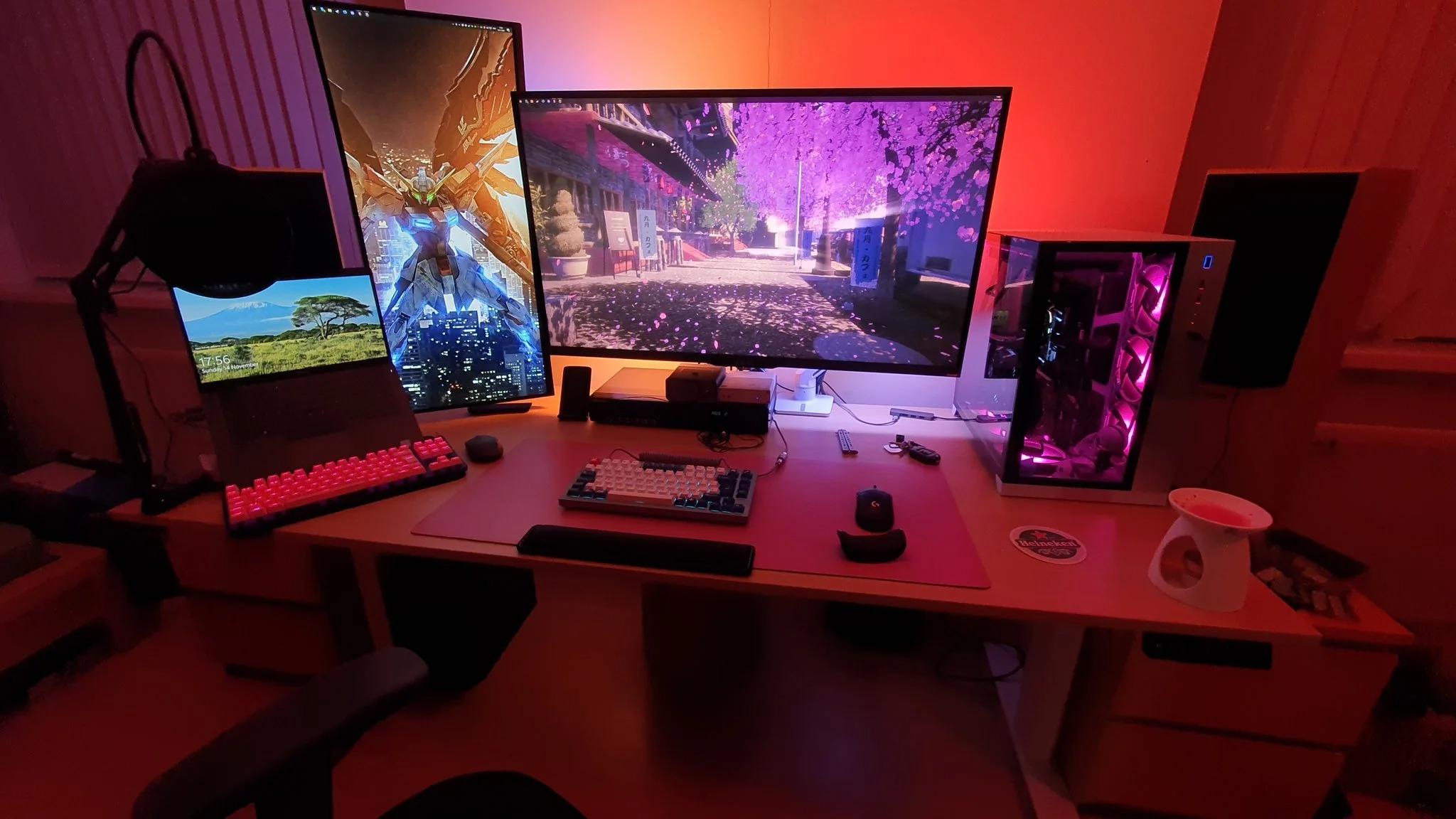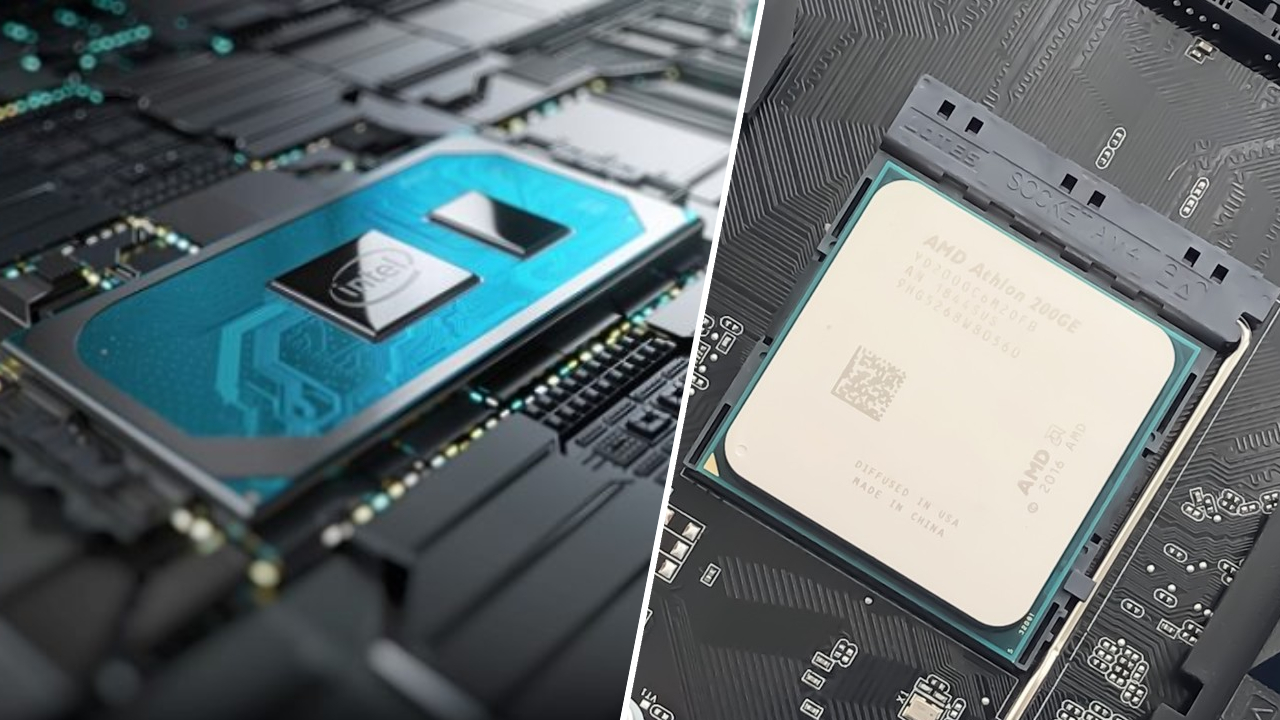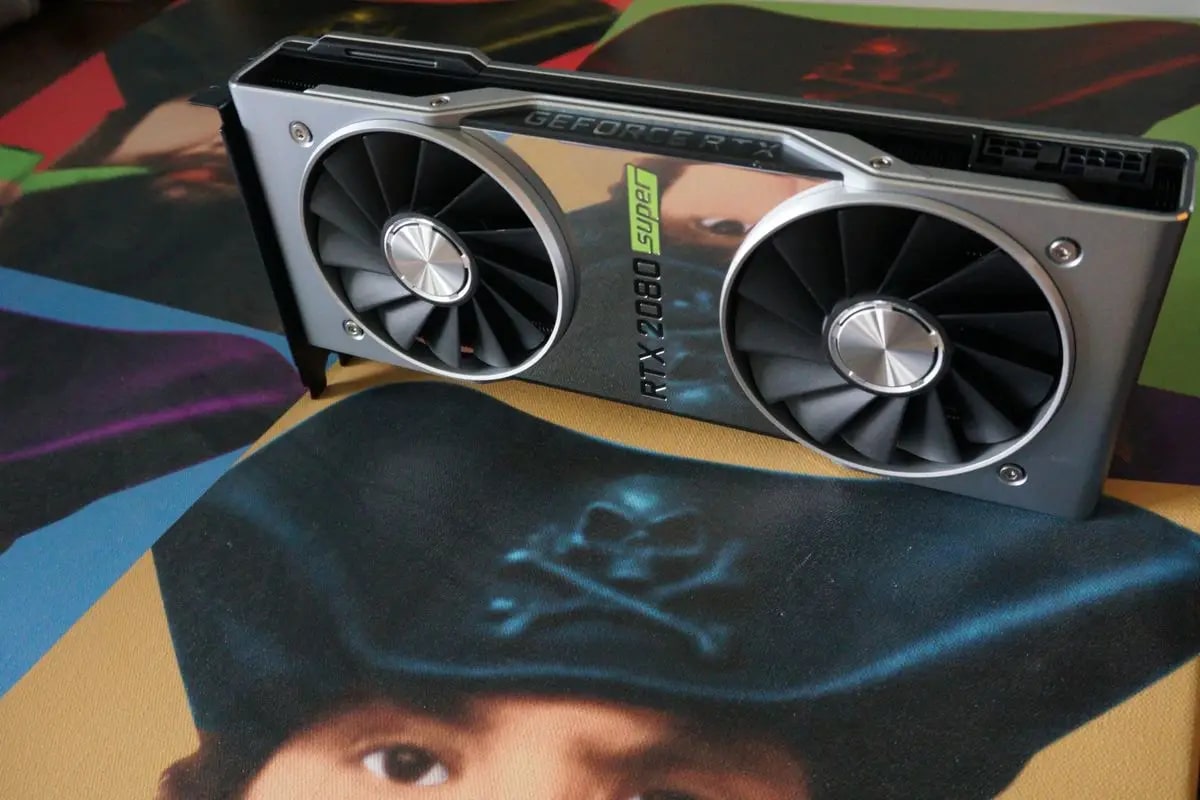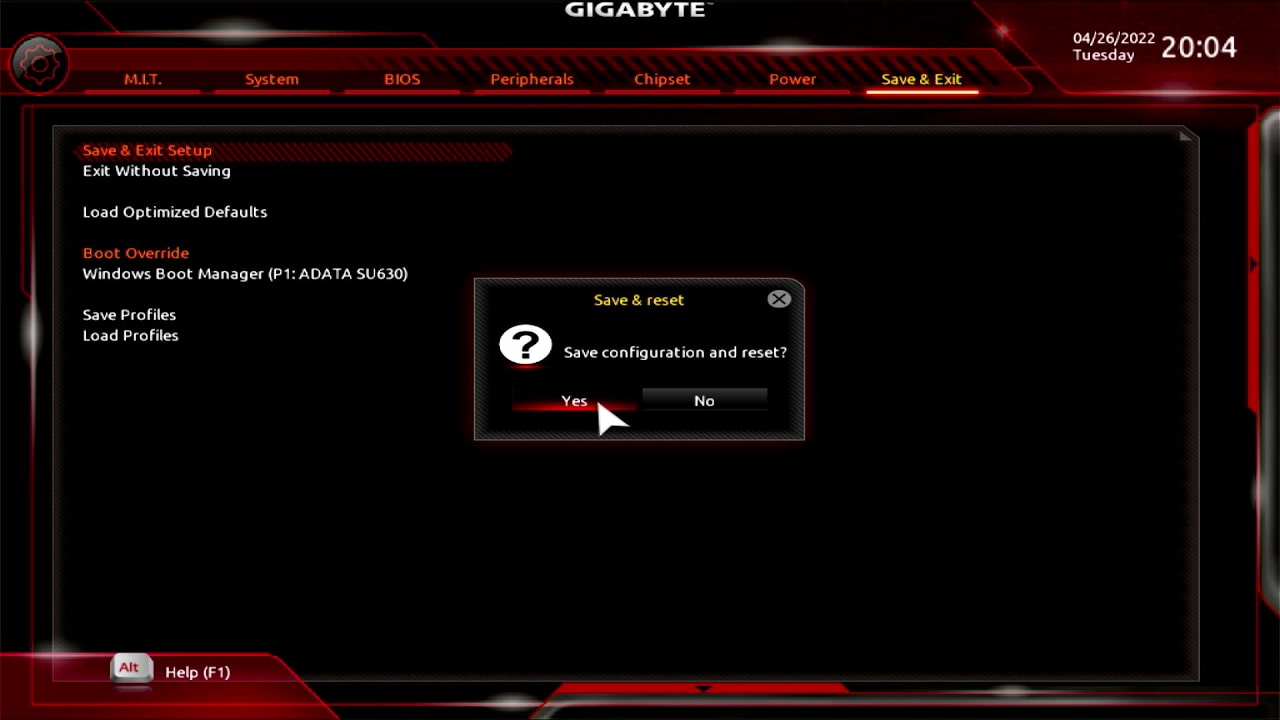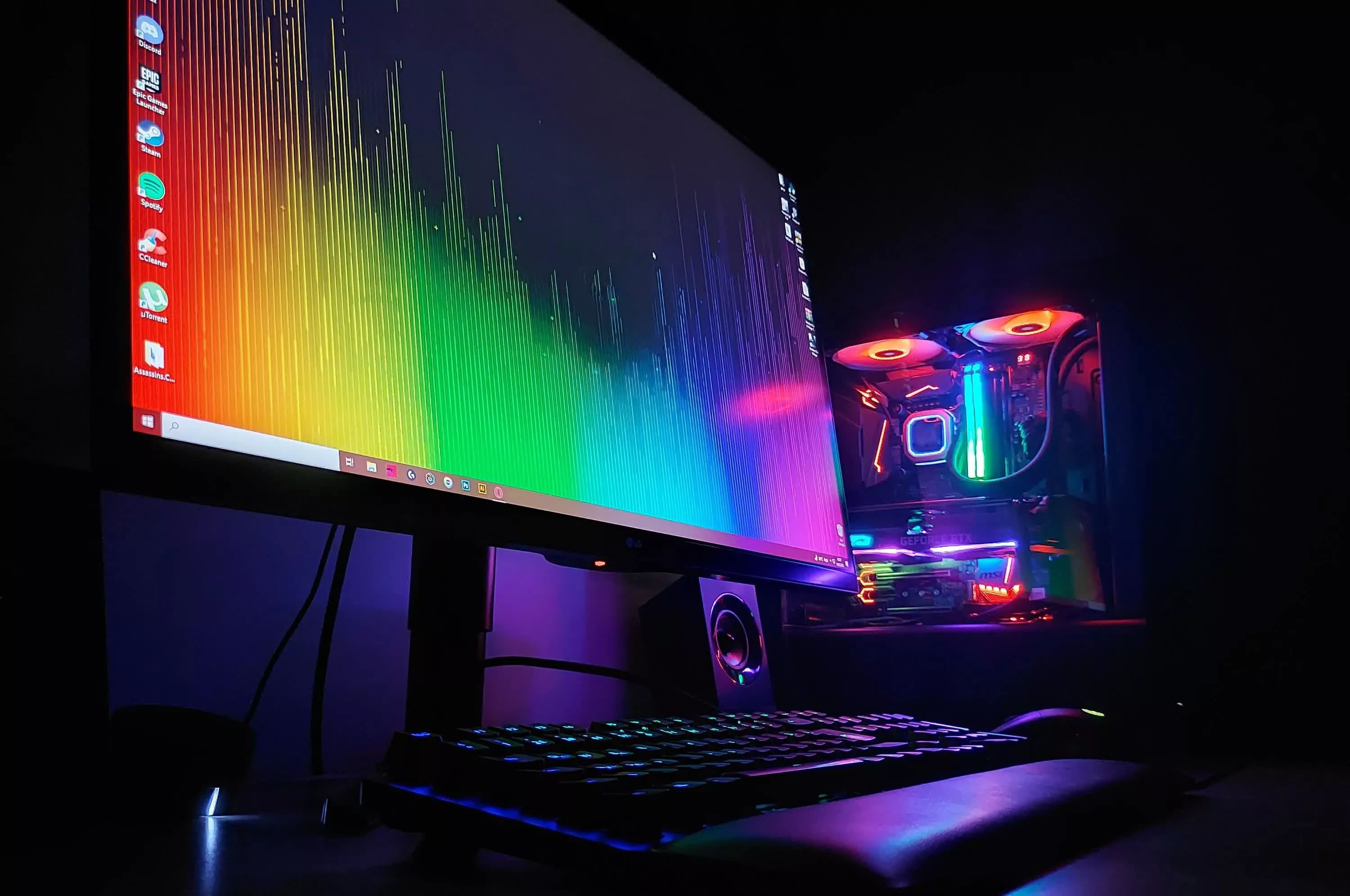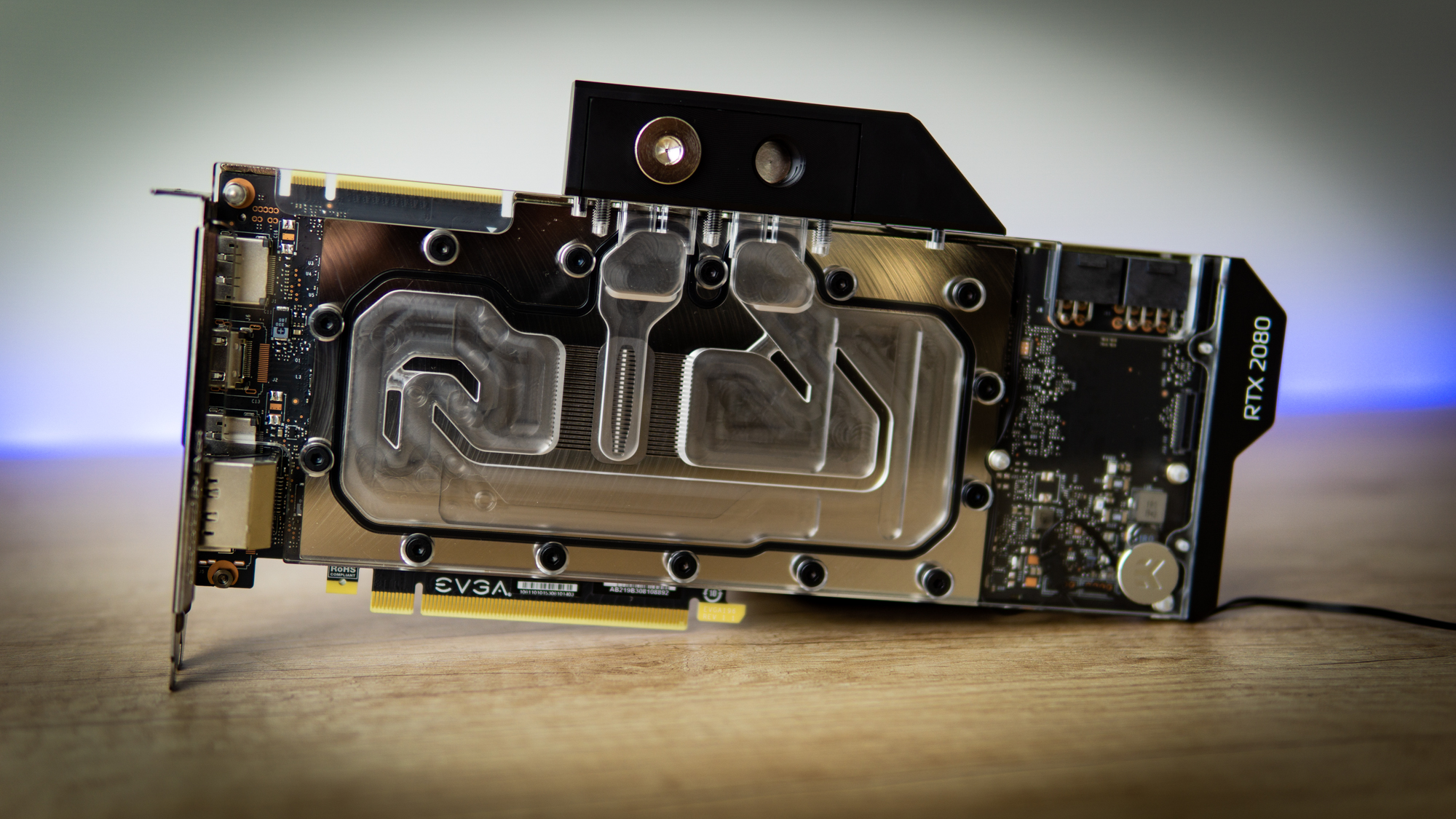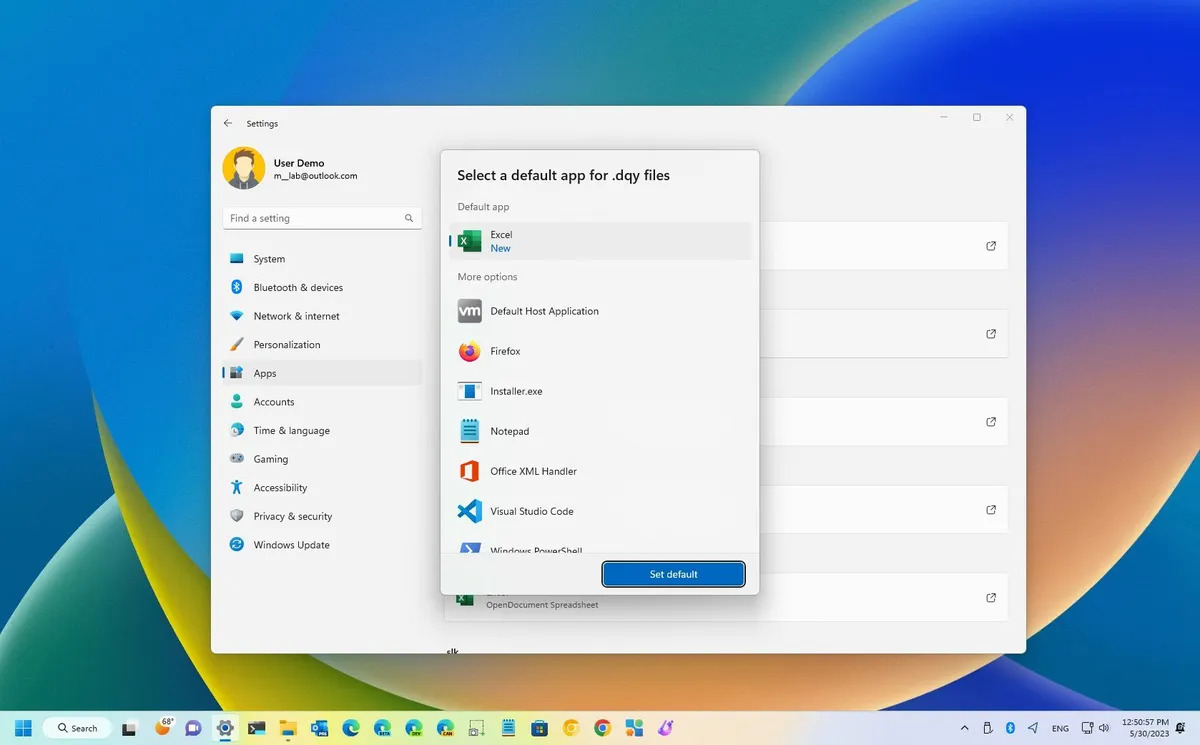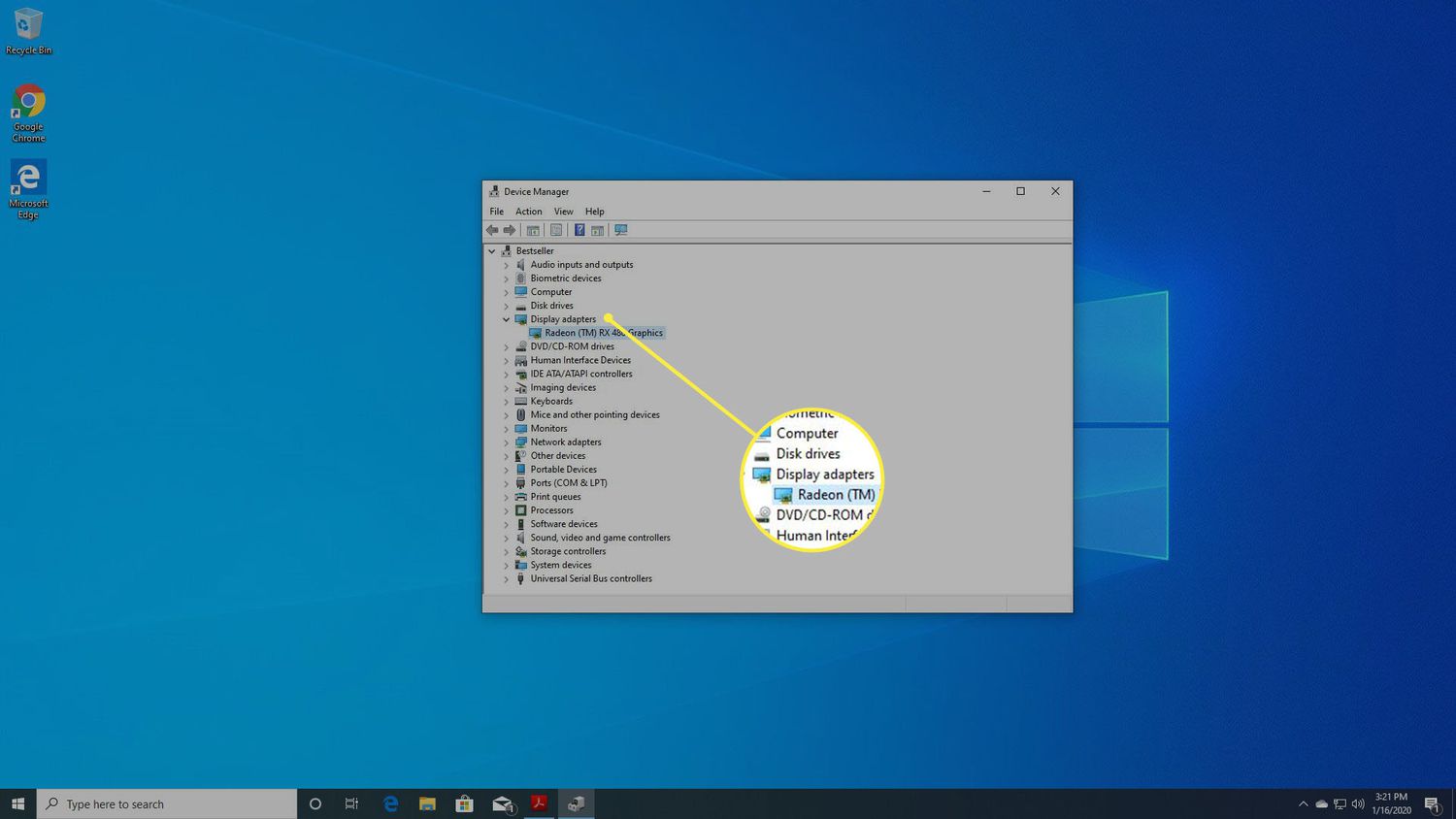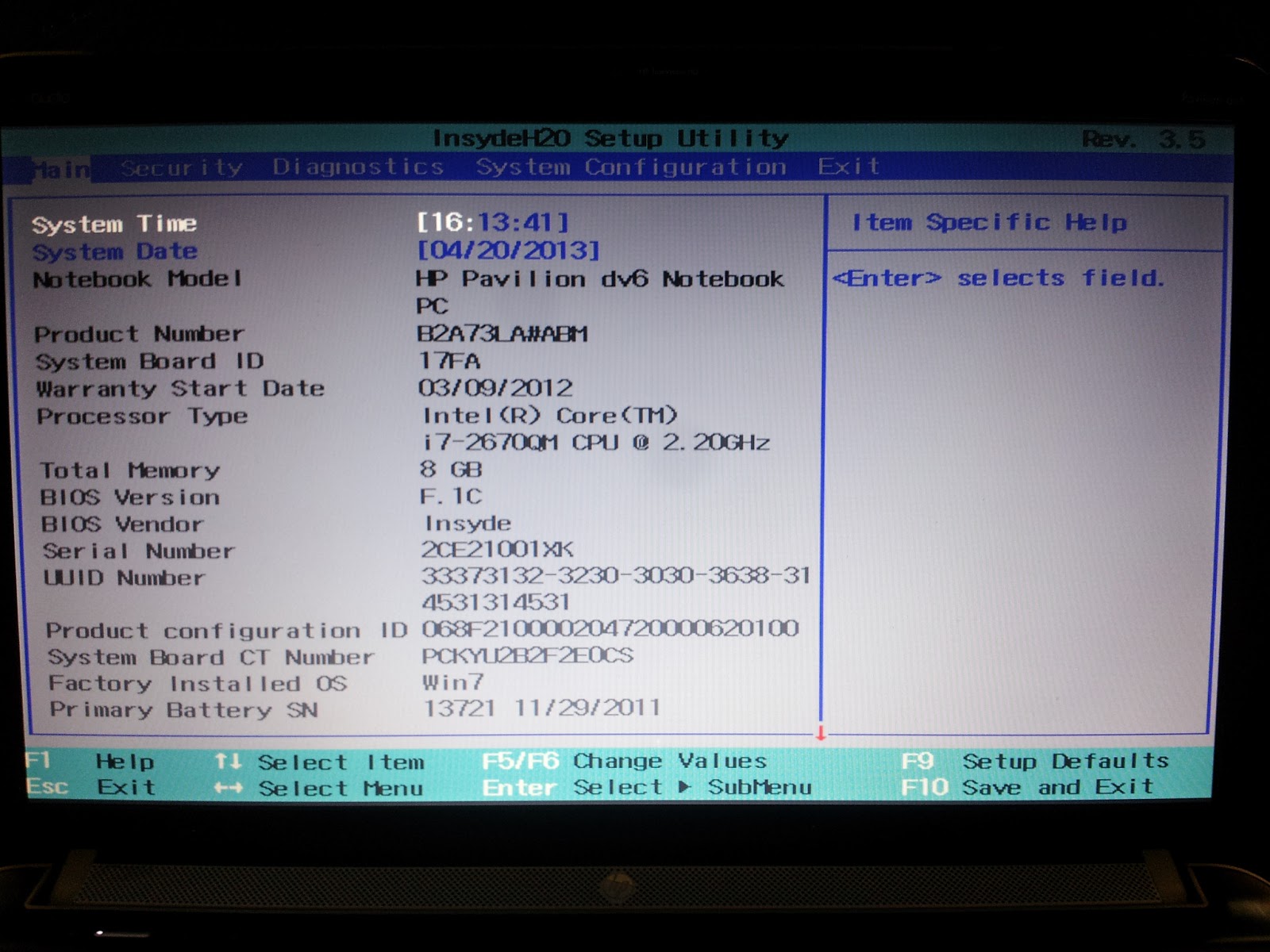Introduction
A computer is a powerful tool that has revolutionized various aspects of our lives. From personal tasks such as communication and entertainment to professional tasks like designing and gaming, computers have become an integral part of our daily routines. One crucial component that enables computers to handle complex graphics and visual tasks is the graphics card.
A graphics card, also known as a video card or GPU (Graphics Processing Unit), is a hardware component that is responsible for rendering images, videos, and animations on a computer screen. It is a specialized processor designed to handle and process visual data rapidly and efficiently. In simple terms, the graphics card acts as a bridge between the computer’s processor and the display, ensuring that images and videos are displayed accurately and with high performance.
Modern graphics cards are equipped with advanced technologies and powerful processors that can handle complex graphics and provide stunning visuals. Whether you are a gamer looking for smooth gameplay and realistic graphics or a designer working with graphic-intensive applications, a high-quality graphics card is essential to enhance your computing experience.
In this article, we will explore the components of a graphics card, how it works, and why it is important in computers. We will also discuss the factors to consider when choosing a graphics card and the advancements in graphics card technology. So let’s dive into the world of graphics cards and unravel the magic behind these remarkable devices.
What is a Graphics Card?
A graphics card, also known as a video card or GPU (Graphics Processing Unit), is a hardware component that is responsible for rendering images, videos, and animations on a computer screen. It is a specialized processor that works in conjunction with the computer’s CPU (Central Processing Unit) to handle graphics-related tasks.
The main purpose of a graphics card is to convert the data received from the computer’s CPU into a format that can be displayed on a monitor. It does this by performing complex calculations and transformations on the graphical data, such as rendering 3D graphics, applying textures, and performing lighting and shading effects.
Graphics cards consist of various components that work together to deliver high-quality graphics and smooth performance. These components include:
- GPU (Graphics Processing Unit): This is the heart of the graphics card. It is a specialized processor that handles most of the graphics computations. The GPU is designed to perform parallel processing, allowing it to execute multiple tasks simultaneously and deliver faster graphics processing.
- VRAM (Video Random Access Memory): VRAM is dedicated memory on the graphics card that stores the graphical data and textures. It allows the GPU to quickly access the data it needs for rendering images on the screen. The amount of VRAM determines the graphics card’s capacity to handle high-resolution textures and complex graphics.
- Clock Speed: The clock speed refers to the speed at which the GPU operates. A higher clock speed means faster processing and smoother graphics performance. Graphics cards often have a base clock speed and a boost clock speed, which allows them to increase their performance when needed.
- Cooling System: Graphics cards generate a significant amount of heat due to the intense processing they perform. To prevent overheating, graphics cards are equipped with cooling systems, such as fans or liquid cooling, to maintain optimal temperatures.
- Outputs: Graphics cards have output ports, such as HDMI, DisplayPort, or DVI, which allow them to connect to monitors or other display devices. These outputs enable the graphics card to transmit the rendered graphics to the screen.
Overall, a graphics card plays a critical role in determining the visual quality and performance of a computer. Whether you are a gamer, a professional video editor, or a graphic designer, having a powerful graphics card can significantly enhance your computing experience by delivering stunning visuals and smooth animations.
Components of a Graphics Card
A graphics card is comprised of several key components that work together to deliver high-quality graphics and ensure smooth performance. Understanding these components will help you make informed decisions when choosing a graphics card for your computer system.
1. GPU (Graphics Processing Unit): The GPU is the central component of a graphics card. It is a specialized processor designed to handle complex calculations and tasks related to graphics processing. GPUs are equipped with thousands of cores, allowing them to perform parallel processing and accelerate graphics rendering.
2. VRAM (Video Random Access Memory): VRAM is dedicated memory on the graphics card that stores the graphical data, textures, and other information needed for rendering images on the screen. The size and speed of VRAM significantly impact the card’s performance and its ability to handle high-resolution textures and graphics.
3. Thermal Solution: Graphics cards generate a significant amount of heat during operation. To prevent overheating, graphics cards are equipped with thermal solutions such as heatsinks, heat pipes, and fans. These components help dissipate heat and keep the graphics card cool, ensuring optimal performance and longevity.
4. Power Delivery: Graphics cards require a dedicated power supply to operate. They come with power connectors that allow them to draw the necessary power from the computer’s PSU (Power Supply Unit). Higher-end graphics cards often require additional power connectors, such as 6-pin or 8-pin PCIe connectors, to meet their power demands.
5. Outputs: Graphics cards have output ports that enable them to connect to display devices such as monitors, TVs, or VR headsets. The most commonly used output ports include HDMI, DisplayPort, and DVI. These ports transmit the rendered graphics from the graphics card to the display device.
6. Cooling System: Graphics cards incorporate various cooling mechanisms to maintain optimal temperatures during operation. This includes fans, heatsinks, and heat pipes, which help dissipate the heat generated by the GPU and other components. Some high-end graphics cards even come with advanced cooling solutions such as liquid cooling or hybrid cooling systems.
7. PCB (Printed Circuit Board): The PCB is the mainboard of the graphics card that houses and connects all the components together. It provides electrical connections between the GPU, VRAM, power delivery, and other necessary components. PCB designs vary across different graphics card models and manufacturers.
Understanding these components will assist you in selecting a graphics card that meets your specific needs and requirements. The combination of a powerful GPU, ample VRAM, efficient cooling, and reliable power delivery is crucial for optimal graphics performance and an immersive computing experience.
How does a Graphics Card work?
Graphics cards perform complex tasks to generate and render images, videos, and animations on a computer screen. Understanding how a graphics card works will give you insights into the intricate processes behind delivering stunning visuals and smooth performance.
1. Data Processing: When the computer sends data related to graphics to the graphics card, the GPU (Graphics Processing Unit) takes over. The GPU is built with numerous cores that can simultaneously process multiple instructions, allowing for efficient computation of graphics operations.
2. Geometry Processing: One of the main tasks of the GPU is geometry processing. This involves transforming and manipulating geometric shapes and vertices to create 3D objects in virtual space. The GPU performs calculations such as translation, rotation, scaling, and projection to transform the raw data into visually recognizable objects.
3. Rasterization: After the geometry processing stage, the GPU converts the geometric data into a rasterized image. Rasterization involves breaking down the 3D objects into pixels and determining which pixels are visible and should be displayed on the screen. This process also involves applying textures, colors, and shading to the pixels.
4. Pixel Processing: Once the image is rasterized, the GPU performs pixel processing. This stage involves calculating the color and intensity of each pixel based on the lighting conditions, textures, and shaders applied. Pixel processing is crucial for achieving realistic lighting effects, shadows, and reflections.
5. Memory Management: The graphics card utilizes VRAM (Video Random Access Memory) to store and manipulate graphical data efficiently. The GPU accesses the VRAM to retrieve necessary textures, shaders, and other data needed for rendering the images. The size and speed of VRAM can significantly impact the graphics card’s performance.
6. Output to Display: Once the image processing is complete, the rendered image is sent to the display device through the output ports on the graphics card, such as HDMI, DisplayPort, or DVI. These ports transmit the graphical data to the monitor, TV, or other display devices, allowing you to visualize the final output.
7. Driver Software: Graphics cards require driver software to communicate with the operating system and other applications. The driver software ensures that the graphics card functions correctly and provides updates to support new features and enhance compatibility with software and games.
By offloading graphics-related tasks from the CPU (Central Processing Unit) to the dedicated GPU, a graphics card significantly improves the computer’s overall performance and enables smoother graphics-intensive operations, such as gaming, video editing, and 3D rendering. The combination of powerful GPU architecture, ample VRAM, efficient memory management, and output capabilities is critical for delivering stunning visuals and an immersive computing experience.
Importance of a Graphics Card
A graphics card plays a crucial role in modern computer systems, serving a range of important functions that significantly impact the overall computing experience. Let’s explore why a graphics card is important and the benefits it brings to various applications and tasks.
1. Enhanced Visual Experience: A powerful graphics card is essential for delivering stunning visuals and realistic graphics. Whether you are gaming, watching videos, or working with graphic-intensive applications, the graphics card ensures smooth rendering, high-resolution textures, and lifelike animations. It enables vibrant colors, sharp details, and immersive visuals, enhancing the overall viewing experience.
2. Smooth Gaming Performance: One of the primary reasons many users invest in a graphics card is for a superior gaming experience. A dedicated graphics card ensures that games run smoothly, delivering high frame rates and minimizing lags and stutters. It handles the demanding graphics processing required for modern PC games, allowing gamers to enjoy visually immersive gameplay.
3. Video Rendering and Editing: Graphics cards accelerate video rendering and editing processes, making them crucial for content creators and professionals in the multimedia industry. With the help of a powerful graphics card, users can process and edit high-resolution videos much faster, apply complex effects, and ensure smooth playback while working on demanding video projects.
4. 3D Modeling and Rendering: Professionals involved in 3D modeling, animation, and architectural design heavily rely on graphics cards. These cards speed up rendering processes, allow for real-time previews, and handle complex calculations necessary for creating lifelike 3D models and environments. A powerful graphics card enables designers to work efficiently and achieve accurate and visually appealing results.
5. Multi-Monitor Display: Graphics cards support multiple monitor setups, which is beneficial for professionals who require an extensive desktop workspace or gamers who want an immersive gaming experience. With a graphics card, users can connect multiple monitors and set up extended displays or use them for multitasking, increasing productivity and facilitating seamless workflow.
6. Virtual Reality (VR) and Augmented Reality (AR): Graphics cards are essential for VR and AR applications, providing the necessary processing power to render immersive virtual and augmented experiences. The smooth rendering, low latency, and high frame rates offered by graphics cards create a realistic and enjoyable environment for users engaging in VR gaming, simulations, or virtual experiences.
Overall, a graphics card is a vital component in modern computer systems, enabling users to experience rich visual content, enjoy smooth gaming performance, and work efficiently with graphic-intensive applications. Investing in a high-quality graphics card ensures optimal performance, enhances productivity, and elevates the overall computing and multimedia experience.
Factors to Consider when Choosing a Graphics Card
Choosing the right graphics card for your computer system is crucial to ensure optimal performance and meet your specific requirements. Here are some key factors to consider when selecting a graphics card:
1. Performance: The performance of a graphics card is determined by factors such as the GPU architecture, clock speed, and the number of cores. Consider your specific needs, whether it’s gaming, video editing, or graphic design, and choose a card that can handle the demands of your intended tasks.
2. Memory (VRAM): The amount and type of VRAM (Video Random Access Memory) are important considerations. Higher VRAM allows the graphics card to handle larger textures and create more detailed and immersive graphics. For gaming and graphic-intensive tasks, look for a graphics card with ample VRAM.
3. Power Requirements: Check the power requirements of the graphics card in terms of wattage and the necessary power connectors (e.g., 6-pin or 8-pin PCIe connectors). Ensure your power supply unit can deliver enough power to meet the requirements of the graphics card you choose.
4. Compatibility: Ensure that the selected graphics card is compatible with your computer’s motherboard and PCIe slot. Check the slot type (e.g., PCIe 3.0, PCIe 4.0) and the physical dimensions of the card to ensure it fits in your computer case without any issues.
5. Connectivity: Consider the outputs and connectivity options provided by the graphics card. Ensure that it has the necessary output ports, such as HDMI, DisplayPort, or DVI, to connect to your display devices. Also, if you plan to set up multiple monitors, ensure the graphics card supports the desired number of displays.
6. Budget: Determine your budget for the graphics card as they are available in a wide range of price points. Set a budget that aligns with your needs and consider the performance and features that you require within that budget range.
7. Brand and Support: Consider the reputation and reliability of the graphics card brand. Look for brands known for their quality, customer support, and driver updates. Research user reviews and independent benchmarks to get an idea of the performance and reliability of the graphics card you are interested in.
8. Future Proofing: Consider the future requirements of your computer system. If you plan to upgrade your monitor to a higher resolution or engage in more demanding tasks in the future, it may be worth investing in a more powerful graphics card now to ensure future compatibility and performance.
By taking these factors into account, you can make an informed decision when selecting a graphics card that meets your specific needs, ensuring optimal performance, compatibility, and value for your investment.
Advancements in Graphics Card Technology
Graphics card technology has experienced significant advancements over the years, pushing the boundaries of visual computing and enabling more immersive and realistic experiences. Here are some notable advancements in graphics card technology:
1. GPU Architecture: The development of new GPU architectures has brought substantial improvements in graphics card performance. Each new generation of GPUs introduces enhanced features, higher clock speeds, and more efficient power utilization, resulting in faster and more powerful graphics processing.
2. Ray Tracing: Ray tracing technology has revolutionized the way lighting and reflections are rendered in real-time graphics. This technique accurately models the behavior of light, resulting in stunning and realistic graphics. Modern graphics cards with dedicated ray tracing hardware can deliver real-time ray tracing for more immersive gaming and visual experiences.
3. DLSS (Deep Learning Super Sampling): DLSS is an AI-driven technology that leverages the power of deep learning neural networks to upscale lower-resolution graphics to higher resolutions in real-time. This technology allows for improved performance and visual quality by providing sharper images and reducing aliasing artifacts.
4. Real-Time Ray-Traced Shadows and Global Illumination: Recent graphics card advancements have introduced the capability to render real-time ray-traced shadows and global illumination. This technology accurately simulates how light interacts with the environment, resulting in more realistic shadows, reflections, and lighting effects in games and other graphical applications.
5. Increased VRAM Capacity: Graphics cards now offer higher VRAM capacities, allowing for the handling of larger and more complex textures. This improvement enables smoother performance in games with high-resolution textures and enhances the capabilities of professionals working with resource-intensive applications like 3D modeling and video editing.
6. Increased Memory Bandwidth: Advancements in memory technology have led to higher memory bandwidth on graphics cards. This increased bandwidth allows for faster data transfer between the GPU and VRAM, resulting in improved performance and better handling of graphically demanding tasks.
7. Efficient Cooling Solutions: Graphics cards now incorporate advanced cooling solutions to manage the heat generated by powerful GPUs. These solutions include larger heatsinks, multiple fans, and even liquid cooling systems. These developments ensure more efficient heat dissipation, leading to improved performance and longevity of the graphics card.
8. Machine Learning and AI Integration: Graphics cards are now being utilized for tasks beyond traditional graphics processing. With the inclusion of tensor cores and AI-specific hardware, graphics cards are being leveraged for machine learning and artificial intelligence tasks, such as deep learning training and inference.
These advancements in graphics card technology have vastly improved the visual quality, realism, and performance of computer graphics. Whether for gaming, content creation, or professional applications, these technological advances continue to drive the evolution of graphics card capabilities and provide users with increasingly immersive and visually stunning experiences.
Popular Graphics Card Brands
When it comes to choosing a graphics card, several reputable brands have been consistently delivering high-quality products. Here are some of the popular graphics card brands known for their performance, reliability, and innovative features:
1. NVIDIA: NVIDIA is a leading brand in the graphics card industry, known for its powerful GPUs and cutting-edge technologies. Their GeForce graphics cards offer exceptional performance in gaming and professional applications. NVIDIA’s GPUs are widely used by gamers, content creators, and professionals for their advanced features like ray tracing, DLSS, and AI acceleration.
2. AMD: AMD (Advanced Micro Devices) is another well-known brand that offers a range of graphics cards. Their Radeon graphics cards provide excellent performance and value, making them popular among gamers and professionals. AMD’s graphics cards are known for their high VRAM capacity and competitive pricing. They also offer features like FreeSync for smooth and tear-free gaming experiences.
3. ASUS: ASUS is a renowned brand that produces a wide range of high-performance graphics cards under its ROG (Republic of Gamers) lineup. These cards are known for their exceptional cooling solutions, robust build quality, and overclocking capabilities. ASUS ROG graphics cards are popular among gamers and enthusiasts for their stunning aesthetics and reliable performance.
4. MSI: MSI (Micro-Star International) is a trusted brand that manufactures a variety of graphics cards suitable for gaming and professional use. Their graphics cards come with exceptional cooling solutions and robust PCB designs. MSI’s Gaming series graphics cards are popular among gamers for their performance and striking design elements.
5. GIGABYTE: GIGABYTE is a reputable brand known for producing high-quality graphics cards with excellent performance and durability. Their AORUS lineup offers flagship GPUs designed for gaming enthusiasts and professionals. GIGABYTE’s graphics cards are well-regarded for their advanced cooling systems and stable overclocking capabilities.
6. EVGA: EVGA is a respected brand in the graphics card market, often preferred by overclockers and gaming enthusiasts. They offer a range of graphics cards known for their superior performance and exceptional customer support. EVGA’s graphics cards come with customizable RGB lighting and specialized cooling solutions, making them popular among gamers seeking top-notch performance.
7. ZOTAC: ZOTAC is a reliable brand that offers a diverse selection of graphics cards tailored for different user needs. Their AMP! and GAMING series graphics cards are known for their excellent performance, compact form factors, and value for money. ZOTAC’s graphics cards often come factory overclocked and offer features like RGB lighting and dual-fan cooling systems.
These are just a few of the many reputable graphics card brands available in the market. Each brand has its own unique features, performance characteristics, and customer support, so it’s important to research and consider your specific needs and budget before making a decision.
Frequently Asked Questions about Graphics Cards
Here are some commonly asked questions about graphics cards that can help clarify any doubts or concerns:
1. What is the purpose of a graphics card?
A graphics card is a hardware component that is responsible for rendering images, videos, and animations on a computer screen. It works in conjunction with the CPU to handle and process graphics-related tasks, providing enhanced visual experiences, gaming performance, and graphics-intensive applications.
2. Do I need a graphics card if my processor has integrated graphics?
While integrated graphics can handle basic tasks, a dedicated graphics card is essential for demanding tasks like gaming, 3D modeling, video editing, and other graphically intensive applications. A graphics card delivers better performance, higher resolutions, and more advanced features compared to integrated graphics.
3. How do I know which graphics card is compatible with my computer?
Check your computer’s motherboard compatibility by verifying the type of PCIe slot available and the physical dimensions within the computer case. Also, ensure that your power supply unit can provide enough power for the graphics card you choose.
4. What factors should I consider when choosing a graphics card for gaming?
Consider factors such as performance, VRAM capacity, cooling solutions, power requirements, and compatibility with your gaming monitor’s resolution and refresh rate. Your budget and the specific requirements of the games you intend to play should also be taken into account.
5. Can I use multiple graphics cards in my computer?
Yes, it is possible to use multiple graphics cards in a computer, known as SLI (Scalable Link Interface) for NVIDIA or CrossFire for AMD. This setup can potentially increase performance in supported applications. However, not all games or applications benefit from multiple graphics card configurations.
6. How often should I update my graphics card drivers?
It is recommended to keep your graphics card drivers up to date to ensure compatibility with the latest games and software updates. Check for driver updates regularly on the manufacturer’s website or use software tools that can automatically notify and install the latest drivers for your graphics card.
7. How can I maintain and optimize the performance of my graphics card?
To maintain optimal performance, regularly clean the graphics card and its fans to prevent dust buildup that can hinder cooling. Ensure proper airflow in your computer case and install the latest graphics card drivers. Additionally, monitor and adjust graphics settings in games to balance performance and visual quality.
Remember that specific questions and concerns may vary based on individual needs and requirements. Consulting with experts or referring to the manufacturer’s documentation and support resources can provide additional guidance and tailored solutions.
Conclusion
Graphics cards play a pivotal role in modern computer systems, enabling high-quality visuals, smooth gaming experiences, and efficient handling of graphically intensive tasks. They have undergone significant advancements over the years, bringing forth innovative technologies and delivering remarkable performance.
Understanding the components of a graphics card, how it works, and the factors to consider when choosing one are essential for making informed decisions. Factors such as performance, VRAM capacity, power requirements, compatibility, and brand reputation should all be taken into account.
Popular graphics card brands like NVIDIA, AMD, ASUS, MSI, GIGABYTE, EVGA, and ZOTAC have gained recognition for their reliable products, advanced features, and exceptional performance. These brands continue to drive the development of graphics card technology, pushing the boundaries of what is possible in visual computing.
Whether you’re a gamer seeking immersive gameplay, a content creator working with graphics and videos, or a professional using 3D modeling or virtual reality, a powerful graphics card is vital to ensuring optimal visual experiences and smooth performance.
As technology continues to evolve, graphics cards are likely to witness more advancements, including further improvements in GPU architectures, real-time ray tracing, AI integration, and memory technologies. These advancements will elevate the quality, realism, and accessibility of computer graphics.
In conclusion, the graphics card remains one of the key components that can significantly enhance your computing experience. Keeping up with the latest developments and choosing a graphics card that meets your specific needs will allow you to unlock the full potential of your computer system, delivering stunning visuals and exceptional performance.







